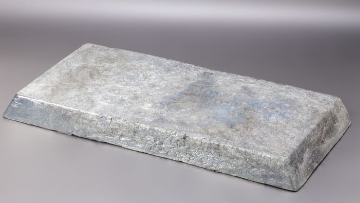Zinc
Zinc (Zn) is a versatile metal known for its corrosion resistance and malleability. It has a bluish-white appearance and is primarily used as an anti-corrosion agent in galvanization processes to protect steel from rusting. Zinc is also crucial in alloy formulations, enhancing properties such as hardness and strength. Industries ranging from construction and automotive to electronics and pharmaceuticals utilize zinc extensively. It plays a vital role in the global economy due to its widespread application in infrastructure projects, manufacturing, and healthcare products.
Zinc is also used in alloys such as brass, nickel silver and aluminium solder. Zinc oxide is widely used in the manufacture of various products such as paints, rubber, cosmetics, pharmaceuticals, plastics, inks, soaps, batteries, textiles and electrical equipment. Zinc is extensively used in making alloys, especially brass, which is an alloy of copper and zinc Special High-Grade Zinc Ingots(SHG). are used to make alloys such as Zamak 3, Zamak 5, ZA27 and many others. It finds use in industries such as Roofing Sheets, Jewellery, chemicals, Pharmaceutical industries and many others
SPECIFICATION :
- Zn : 99.95% min ( High Grade)
- Zn : 99.995% min ( Special High Grade ) ( LME REGISTERED)
Size of the ingot 25kgs
Dimension: L 430x B 210x H 35-40 mm
Specification :
|
Zn
|
99.995 MIN
|
|
Pb
|
0.003 MAX
|
|
Cd
|
0.002 MAX
|
|
Fe
|
0.001 MAX
|
|
Cu
|
0.001 MAX
|
|
Sn
|
0.001 MAX
|
Uses of zinc ingots
Hot dip galvanizing
Electroplating galvanising
Zinc plating
Zinc Die Casting Alloy
|
Element characteristics and Properties
|
|
Atomic number
|
30
|
|
Atomic weight
|
65.39
|
|
Melting point
|
420 °C (788 °F)
|
|
Boiling point
|
907 °C (1,665 °F)
|
|
Density
|
7.133 grams/cm3 at 25 °C (68 °F)
|
The approximate breakdown of the use of zinc annually:
- 50% Galvanizing
- 17% Die-casting
- 17% Brass & Bronze
- 6% Rolled Zinc
- 6% Chemicals
Zinc
